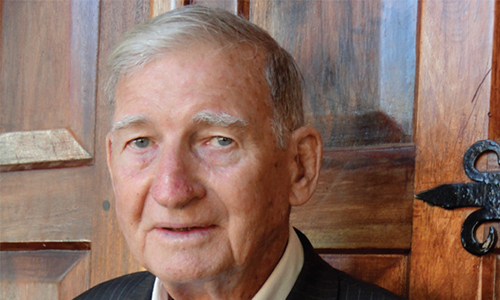There is an interesting historical fact which connects Mazinde Juu to the German Colonial period which began in 1885. The connection may be slight but in reality quite significant for the very existence of Mazinde Juu secondary school here at Magamba, Lushoto.
In 1914 German East Africa became a battleground between the German colonial armed forces and England and her allies who wanted to liberate or more accurately, to occupy this choice corner of Africa.
By 1916 the German forces were greatly reduced in numbers and were suffering from uncountable battlefield casualties as well as famine. Sickness and disease.
Being unable to put an army into the field to stand against the English, Von Lettlow Vorbech, the German general, retreated to Mozambique across the southern border of Tanganyika.
There the German General continued his tactic of eluding his English enemies and harassing them along the southern and eastern borders of Tanganyika.
Pardon this historical preamble but it is a significant chapter in the history of Tanzania and has an interesting connection with Mazinde Juu.
During the German colonial period from 1985 to 1916 the Germans were determined to make German East Africa, as it was then called, a productive agent supplying the German homeland with raw materials.
At this time Dar es Salaam was hardly worth considering either economically or politically and the tropical heat along with pestilential fevers made Dar es Salaam an unhealthy place to live. With the German gift of finding solutions to problems and their enormous determination to solve them they chose Lushoto in the Usambara mountains as the most likely spot for setting up of the seat of their colonial government.
They fell in love with the Usambara mountains, the rain forests and especially with the mild temperate climate which reminded them of home in Germany.
To this day the German place names still exist in Lushoto like Jagertal or Dochi which is the Swahili version of the Deutsche Shule or the German school on the outskirts of Lushoto town not to overlook the Kaiserhof Hotel now the location of the Lushoto Catholic Church. Further up into the mountains some 6 kilometres from Lushoto town, they built a beautiful Bavarian residence fit for a governor.
I have not been able to identify all of the residents of that state house during colonial periods of but it is a fact that an English army officer Sir William Leeds came into possession of the former German mansion.
William Leeds was a very wealthy Sisal plantation owner and left impressive monuments to his influence in the Tanga region, the Mkonge Hotel and the Sisal board building just to mention two. In the1930’s he gave over the ownership of the residence of the former German governor to the British colonial government and was given a plot further up the mountain where he built his own spacious home which was designated Mazinde Juu or the Upper Mazinde.
The original name of Mazinde was the vast sisal plantation which Mr. Leeds owned and operated for many years in the Mombo valley .
MR. Leeds would commute from Mazinde in the valley to Magamba flying his small aircraft up the mountain and spending his weekends here with his wife and son David. Sir William died in 1942 leaving his wife and son David alone in Mazinde Juu.
Lady Leeds herself retired perhaps in the early 1960’s and went to Europe and left Mazinde Juu as the property of the Tanzania Bishop’s conference. The Bishop’s conference ran a Domestic training centre for religious sisters from 1966 to 1969.
It was under the guidance of a German teacher Ms. Katarina Fitzpatrick. The school did not thrive due to the lack of facilities,the cold climate and the remoteness of the location so the Bishops’ Confrence gave the property to the Bishop of Tanga, Maurus Komba to make good use of the place for the benefit of the local people.
A small band of Sisters of the Usambara Congregation ran a Domestic Science school for local girls on a very small budget.
This school carried on for some years and evolved into Mazinde juu secondary school with Father Damian Milliken as manager and Mrs. Eva Mazala as the first Headmistress. St. Mary’s Mazinde juu opened its doors on February 28.1989 with one teacher and two ex- form IV students as assistants and fourty students. Sister Eveta Kilamba was one of that first group of fourty and now is in her seventh year as Headmistress of the same school where she started out.
What grew here at Mazinde Juu is a wonderful example of the evolutionary power of education to expand and improve upon itself under the sustaining power of Faith and the Holy Spirit.
The obstacles, trials and difficulties were many but the divine design of the Lord brought about a beautiful instrument for the enlightenment and betterment of the young women of Tanzania who had for too long been forgotten.
Due to a serious lack of resources we have learned to be very self reliant in using readily available resources for the building up of the infra structure of the school. As much as possible we have utilized all local labor and local resources and talent to establish the Mazinde Juu that stands firm on its mountain and high in its academic success.
Our very special thanks goes to Bishop Telesphore Mkude who had the vision and resolve to give his blessing to this undertaking. His support and belief in what was taking place here has made Mazinde Juu the reality that we see here today. Without Bishop Mkude none of us would be here today for such a ceremony as this. God bless you Bishop Thelesphore Mkude
There is an interesting historical fact which connects Mazinde Juu to the German Colonial period which began in 1885.
